Hanguranketha – refuge of Kandyan Kings
By Arundathie Abeysinghe
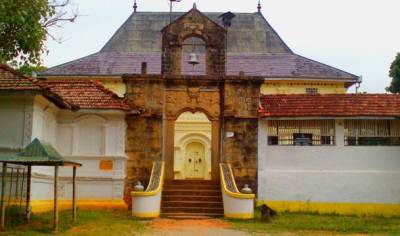
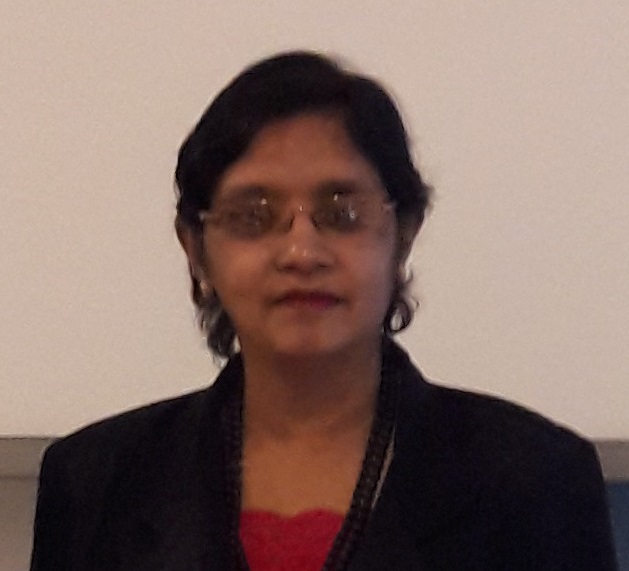 Situated off the beaten track and rarely visited by local as well as foreign tourists, charm, beauty and solitude pervade Hanguranketha, the spectacular tiny hamlet in the Central Highlands.
Situated off the beaten track and rarely visited by local as well as foreign tourists, charm, beauty and solitude pervade Hanguranketha, the spectacular tiny hamlet in the Central Highlands.
According to scholars, Hanguranketha is derived from “Sangaruwan ketha” (meaning thriving paddy fields in Sinhala).
Steeped in history and legend and situated approximately 29 kilometers southeast of Kandy City, kings had used Hanguranketha during the Kandyan Kngdom as a refuge when the hill capital (Kandy) was attacked by invading foreign troops. According to legends, King Senarath (1604 – 1635) had constructed the first Royal Palace in Hanguranketha. According to *Robert Knox’s records, the Palace had been surrounded by a white washed giant wall during the Kandyan Kingdom and the entrance of the Palace had intricately carved doors and door panels.
An inscription by Queen Leelawathi of *Polonnaruwa Era had been found in the Royal Palace some years ago. This palace had provided shelter to Konappu Bandara before he ascended the throne as King Wimaladharmadsuriya I (1592 – 1604). *King Weera Parakrama Narendrasinha (1707 -1739 AD) had also stayed a long period in Hanguranketha and had been popular among villagers as “King of Hanguranketha”.
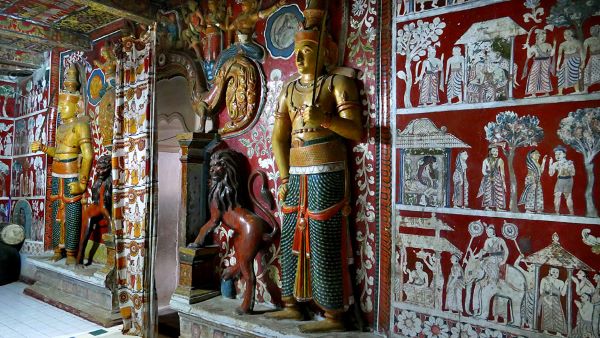
The Royal Palace had been destroyed during the *1818 Rebellion. The majority of the ruins of the Palace are sheltered in the Kandy Museum. But there are some moonstones, stone doorways and stone pillars at the site. According to a stone inscription, the present Pothgul Viharaya (the Scriptures Monastery) is built in these premises. There many valuable old manuscripts regarding Kandyan history housed in this temple which will be of immense benefit to future researchers.
The audience hall at Hanguranketha had been built by King Rajasinghe II (1635- 1687) similar to the *Audience Hall in Kandy and this audience hall had been used by kings for recreation, whereas the Audience Hall in Kandy was used for official and ceremonial purposes.
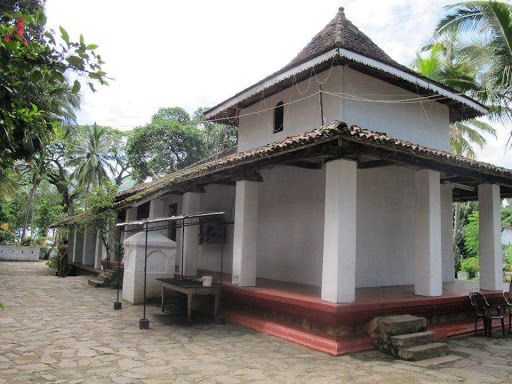
At present, there are two ancient buildings in Hanguranketha, the Pothgul Maliga Maha Viharaya (Buddhist Temple with a library) with art and architecture of *Kandyan Era as well as an ancient devale (Hindu Temple). The Temple had been named “Pothgul Viharaya” due to the *ola leaf manuscripts displayed in the Library. There is an ambalama (wayside rest utilized by travelers in the past) in close proximity to the devale. The open-air structure of the ambalama dates to Kandyan era. There are stone pillars with an inner and outer chamber including a clay tile roof in the ambalama. A pinthaliya (a vessel with drinking water) is placed near the ambalama.
The Temple had been built during the latter part of the Kandyan Kingdom under the guise of constructing a church. The two-storey structure beyond the *makara thorana bears distinct European architecture with its façade embellished with elegant figurines and murals. The wide arches resemble the interior of a church building. The Image House of the Temple is constructed behind the two-storey building to avoid detection from onlookers. It comprises four separate chambers and the walls of these chambers feature art dating to Kandyan era. Among the paintings in the Temple, there are depictions of the previous incarnations of the Buddha, the manner in which he had received Niyatha Vivarana (receipt of permission) from the previous Buddha. There are also intricate paintings that depict the arrival of *Prince Vijaya and the battle between *King Dutugemunu and *King Elara.
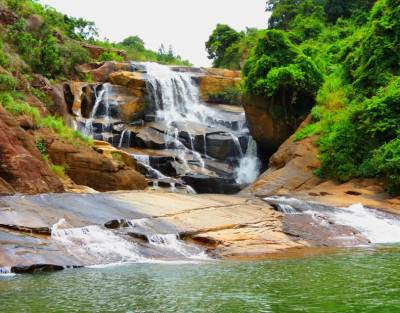
A canon is placed inconspicuously near the granite makara thorana. British troops had used this canon during their attacks to this site.
- Anuradhapura Kingdom – A major city in Sri Lanka (former Ceylon), the capital of Anuradhapura District, Anuradhapura was one of the ancient capitals of Sri Lanka and is famous for its well-preserved ruins of Sri Lankan civilization. Founded in the 4th century, Anuradhapura was the capital of Sri Lanka until the beginning of the 11th century. Anuradhapura is considered sacred to Buddhists and there are monasteries, stupas within an area of 40 square kilometers. Situated 205 kilometers north of Colombo, Anuradhapura was declared as the “Sacred City of Anuradhapura” and a World Heritage Site by UNESCO in 1982.
- Chola conquest – This was a military invasion of the Anuradhapura Kingdom by the Chola Empire of Southern India, one of the longest ruling dynasties in world history. Initially, the Anuradhapura Kingdom was invaded in 993 AD and absorbed it into the Chola Empire of Southern India.
- 1818 rebellion – Great Liberation War of 1817-18 also known as the 1818 rebellion or 1818 Uwa -Wellassa uprising (named after the two places the war was commenced) was the third Kandyan War between Kandyan rebels and the British.
- Kandyan Era – Kandyan Era covers history of Sri Lanka from 1597-1815. Kandyan Kingdom was the last kingdom in Sri Lanka.
- King Dutugemunu (164 BC -140 BC) – Also known as Duttagamini was born to a royal family in southern Sri Lanka. His parents were King Kavantissa and *Princess Vihara Maha Devi. His brother was Prince Saddha Tissa.
- King Elara – Also known as “Ellalan” was a member of the Tamil Chola dynasty who captured the throne and became king of the *Anuradhapura Kingdom from 205 BCE to 161 BCE. According to chronicles, Elara had ruled Sri Lanka justly during a period of 44 years.
- King Weera Parakrama Narendrasinha – He was the last Sinhalese King in Sri Lanka as well as the Kandyan Kingdom. He was the son of King Wimaladharmasurya II (reign 1687 – 1707). He succeeded to the throne in 1706 at the age of 18 years and reigned for 32 years.
- Mahawamsa – “Great Chronicle” or “Great Dynasty” in Sinhala is the most significant work of Sri Lankan origin written in Pali Language. This Chronicle describes life and times of Sri Lankans from the arrival of Vijaya in 43 BC to the reign of King Mahasena from sixth century BC to fourth century AD. Culavamsa (lesser chronicle) covers the period from fourth century AD to British takeover of Sri Lanka in 1815. Mahavamsa consists of three parts covering a historical record of over two millennia. It is considered as the world’s longest unbroken historical record.
- Makara Thorana – Considered by many Sri Lankans as a traditional decorative archway, Makara Thorana dates to pre-Buddhist era in India. Its symbolism and association with Hinduism has been construed by many scholars and art critics in diverse ways. This type of archway adorns the shrine rooms of many Buddhist Temples in Sri Lanka. Considered as guardians of Buddhist Temples, Makara Thorana is erected at entrances.
- Ola leaf – Palm leaf used for traditional writing in ancient times. The leaves are from the talipot tree (Corypha umbraculifera). During the latter part of the first century BC, Buddhist monks inscribed teaching of the Buddha through oral tradition on ola leaves, some of which are preserved to date.
- Polonnaruwa Era – The Kingdom of Polonnaruwa or the ancient city of Polonnaruwa (also known as Pulastipura) was the second capital of Sri Lanka for three centuries from 11th to 13th After the *Chola conquest of Anuradhapura Kingdom, the center of administration was shifted to Polonnaruwa until 1232. Polonnaruwa has been declared a World Heritage Site by UNESCO.
- Princess Viharamahadevi – She was the daughter of King Kelanitissa and the Queen consort of King Kawantissa who was known as Queen Viharamahadevi after marriage. Queen Viharamahadevi was the mother of King Dutugemunu and Prince Saddhatissa.
- Prince Vijaya – He was an Indian Prince and was banished from India by his father due to misconduct. He later became King Vijaya (reign 543-505 BCE). He was the first king in Sri Lanka as cited in the Sri Lankan chronicle the *Mahāvaṃsa. According to legends, he had arrived in Sri Lanka (former Ceylon) by ship with hundreds of his followers.
Image courtesy: Lanka24news & trips.lakdasun.org
Audience Hall Kandy – location of a historic event
https://www.elanka.com.au/audience-hall-kandy-location-of-a-historic-event-by-arundathie-abeysinghe/
Robert Knox Memorial – tribute to a British Traveler







